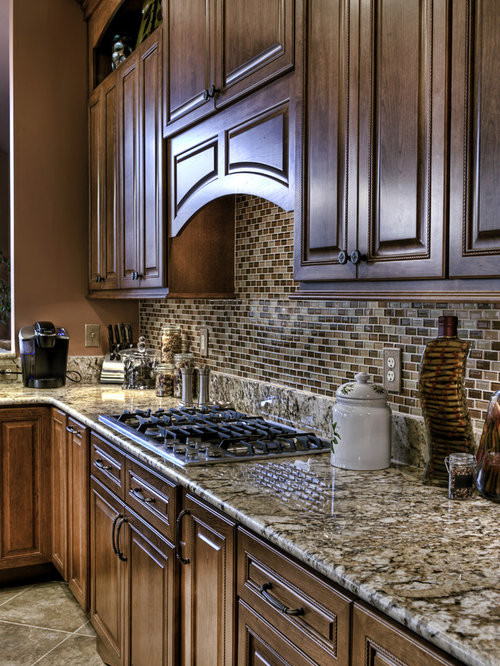Granite kitchen backsplashes are a popular choice for homeowners looking to add both functionality and elegance to their kitchen spaces. Granite, a natural stone known for its durability and beauty, offers numerous advantages when used as a backsplash material. Its unique veining and color variations add visual interest and texture to the kitchen, creating a stunning focal point that enhances the overall aesthetic appeal of the space. Additionally, granite is highly resistant to heat, scratches, and stains, making it an ideal choice for use behind stovetops and sinks where it can withstand the rigors of daily kitchen activities.
One of the key benefits of granite kitchen backsplashes is their versatility in terms of design and style. Granite comes in a wide range of colors, patterns, and finishes, allowing homeowners to choose the perfect option that complements their kitchen decor and personal taste. Whether you prefer a sleek and modern look with a polished finish or a more rustic and natural feel with a honed or leathered finish, granite offers endless possibilities for customization to suit any design aesthetic.

In addition to its aesthetic appeal, granite kitchen backsplashes are also highly practical and easy to maintain. Unlike other materials such as tile or glass, granite is non-porous and resistant to moisture, making it easy to clean and maintain. Spills and splatters can be quickly wiped away with a damp cloth, and routine maintenance typically only requires periodic sealing to protect the surface and maintain its luster.
Furthermore, granite kitchen backsplashes can significantly increase the value of a home. Granite is widely regarded as a premium building material due to its durability, longevity, and timeless appeal. Installing a granite backsplash can instantly elevate the look and feel of the kitchen, making it more attractive to potential buyers and adding value to the property overall.

When designing a kitchen with a granite backsplash, it’s essential to consider the overall color scheme and style of the space. Granite comes in a variety of colors ranging from subtle neutrals like white and beige to bold hues like black and blue, so homeowners should choose a color that complements the existing cabinetry, countertops, and flooring. Additionally, the size and layout of the kitchen should also be taken into account when selecting a granite slab, as larger kitchens may benefit from larger slabs with fewer seams.

Common mistakes to avoid when installing a granite kitchen backsplash include:
- Failing to properly seal the granite: Granite is a porous material that can absorb liquids and become stained if not properly sealed. It’s essential to seal the granite backsplash regularly to protect the surface and maintain its appearance.
- Choosing the wrong color or pattern: Selecting the right color and pattern of granite is crucial to achieving the desired aesthetic in the kitchen. It’s important to consider the overall design scheme and color palette of the space to ensure the granite complements rather than clashes with other elements.
- Not hiring a professional installer: Installing a granite backsplash requires precision and expertise to ensure a proper fit and finish. Attempting to DIY the installation can result in uneven seams, gaps, or other issues that compromise the appearance and durability of the backsplash.
- Overlooking the importance of maintenance: While granite is relatively low-maintenance compared to other materials, it still requires regular care to keep it looking its best. Neglecting to clean and seal the granite backsplash can lead to stains, discoloration, and deterioration over time.
- Ignoring the impact of lighting: Lighting plays a significant role in highlighting the beauty of a granite backsplash. It’s important to consider the placement and type of lighting fixtures in the kitchen to ensure the granite is properly illuminated and showcased.

Is granite backsplash more expensive than other materials?
Granite backsplash can be more expensive than other materials like tile or laminate, but it offers superior durability, longevity, and aesthetic appeal, making it a worthwhile investment for many homeowners.
How often should I seal my granite backsplash?
The frequency of sealing depends on the type of granite and the level of use in the kitchen. Generally, it’s recommended to seal granite backsplashes every 1-3 years to protect the surface and maintain its integrity.
Can I install granite backsplash over existing tile or laminate?
Yes, granite backsplash can be installed over existing tile or laminate backsplashes. However, it’s important to ensure that the existing surface is clean, flat, and structurally sound before installation to achieve the best results.
Can I use abrasive cleaners on granite backsplash?
No, abrasive cleaners should be avoided as they can scratch or damage the surface of the granite. It’s best to use mild dish soap and water or a pH-neutral stone cleaner to clean granite backsplashes.
Can granite backsplash be customized to fit my kitchen?
Yes, granite backsplashes can be customized to fit the specific dimensions and layout of your kitchen. Professional fabricators can cut and shape granite slabs to create a custom backsplash that perfectly fits your space.

Small bar area with full height backsplash Pretty kitchen, Home kitchens, Decor

Unique Kitchen Backsplash Ideas You Need to Know About – Decor Around The World

Grouting a Backsplash to Countertop Joint with Latex Caulking Tile Your World

Related Posts:
- Non Tile Kitchen Backsplash Ideas
- Ivory Kitchen Cabinets With Backsplash
- Kitchen Backsplash Prices
- Small Kitchen Backsplash Design
- How High To Tile Kitchen Backsplash
- Brown Kitchen Backsplash Tile
- Modern Kitchen Backsplash Gallery
- Different Types Of Backsplash For Kitchen
- Blue Grey Kitchen Backsplash
- Dark Kitchen Backsplash